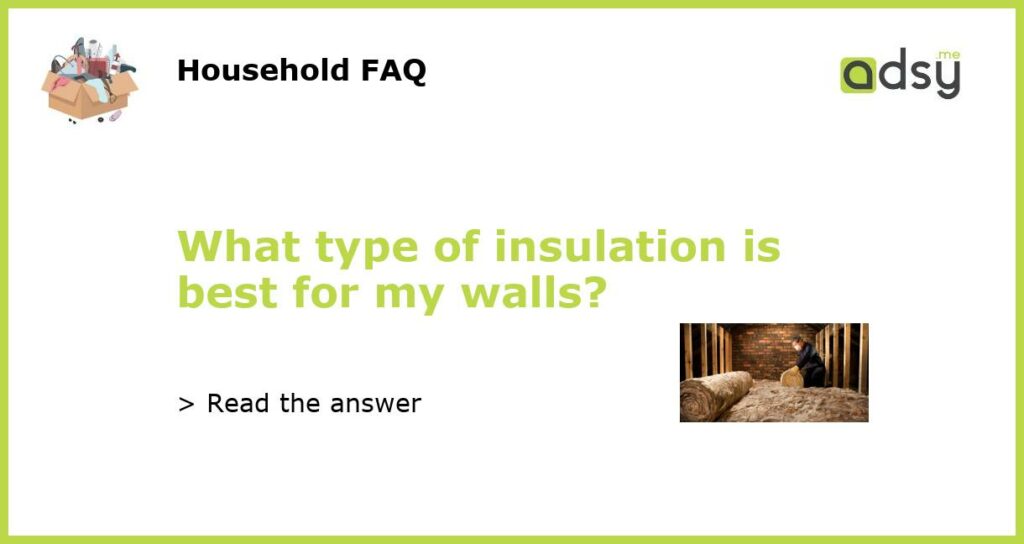What type of insulation is best for my walls?
When it comes to insulating your walls, it is important to consider factors such as energy efficiency, cost, and ease of installation. There are several types of insulation available on the market, each with its own advantages and disadvantages. In this article, we will explore some of the most popular types of insulation and help you determine which one is best for your walls.
Fiberglass Insulation
Fiberglass insulation is one of the most commonly used types of insulation for residential walls. It consists of small glass fibers that are spun into a fluffy material. Fiberglass insulation is available in batts or rolls, which can be easily installed between wall studs. It offers good thermal performance and can help reduce energy costs by keeping your home cool in the summer and warm in the winter. However, fiberglass insulation can be irritating to the skin and lungs if not installed properly, so it is important to wear protective clothing and take appropriate safety precautions during installation.
Spray Foam Insulation
Spray foam insulation is a popular choice for homeowners who are looking for an efficient and durable solution. It is made of polyurethane foam, which is applied as a liquid and expands to fill the wall cavities. Spray foam insulation provides an excellent air barrier and also has a high R-value, making it highly energy-efficient. Additionally, it can help reduce noise transmission and is resistant to mold and moisture. However, spray foam insulation can be more expensive compared to other types of insulation, and professional installation is recommended to ensure proper application.
Cellulose Insulation
Cellulose insulation is another option to consider when insulating your walls. It is made from recycled paper and treated with chemicals to make it fire-resistant. Cellulose insulation is typically blown into wall cavities using a special machine, allowing it to fill all the gaps and crevices. It provides good thermal performance and has a high R-value, making it an effective insulator. Cellulose insulation is also environmentally friendly and can help reduce noise transmission. However, it can be messy to install, and proper sealing of the wall cavities is important to prevent air leakage.
Rigid Foam Insulation
Rigid foam insulation, also known as foam board insulation, is a type of insulation that is composed of rigid panels made of polystyrene, polyisocyanurate, or polyurethane. It is lightweight and easy to handle, making it a popular choice for DIY installation. Rigid foam insulation offers high thermal resistance and can help reduce energy costs. It also provides good moisture resistance and can act as a vapor barrier. However, rigid foam insulation can be more expensive compared to other types of insulation, and proper installation is necessary to prevent air leakage and ensure optimal performance.
When it comes to choosing the best insulation for your walls, there is no one-size-fits-all solution. It ultimately depends on your specific needs, budget, and preferences. Fiberglass insulation is a cost-effective option that offers good thermal performance. Spray foam insulation provides excellent air sealing and energy efficiency but tends to be more expensive. Cellulose insulation is environmentally friendly and effective, but can be messy to install. Rigid foam insulation is lightweight and offers high thermal resistance, but can also be more expensive. Consider consulting with a professional to determine the best insulation for your walls based on your unique circumstances.

